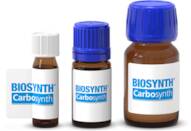3,4,5-Trimethacarb
CAS: 2686-99-9
Ref. 3D-CAA68699
| 5mg | Descatalogado | ||
| 10mg | Descatalogado | ||
| 25mg | Descatalogado | ||
| 50mg | Descatalogado | ||
| 100mg | Descatalogado |
Información del producto
- 3,4,5-Landrin
- 3,4,5-Trimethylfenylester kyseliny methylkarbaminove
- 3,4,5-Trimethylfenylester kyseliny methylkarbaminove [Czech]
- 3,4,5-Trimethylphenol methylcarbamate
- 3,4,5-Trimethylphenyl N-methylcarbamate
- Ai3-25843
- Brn 2052372
- Broot
- Carbamic acid, methyl-, 3,4,5-trimethylphenyl ester
- Carbamic acid, methyl-, 3,4,5-trimethylphenyl ester (7CI)(8CI)
- Ver más sinónimos
- Caswell No. 893A
- EPA Pesticide Chemical Code 102401
- Ent-25,843
- Landrin 1
- Landrin A
- Methylcarbamic acid 3,4,5-trimethylphenyl ester
- Oms-597
- Phenol, 3,4,5-trimethyl-, 1-(N-methylcarbamate)
- Phenol, 3,4,5-trimethyl-, methylcarbamate
- Phenol, 3,4,5-trimethyl-, methylcarbamate (9CI)
- Sd 8530
- Shell 8530
- Shell SD-8530
- Trimethacarb
- Trimethacarb [ANSI]
3,4,5-Trimethacarb (3,4,5-TM) is a bicyclic heterocycle that can be synthesized from metal hydroxides and has shown to have insecticidal properties. 3,4,5-TM has been shown to inhibit the growth of bacteria such as Carbofuran and Carbaryl by binding to the enzyme acetylcholinesterase. The compound also inhibits the production of fatty acids in plant tissue. 3,4,5-TM is metabolized through an oxidative pathway that involves cytochrome P450 enzymes and aldehyde oxidases. In addition to its insecticidal properties, 3,4,5-TM has been shown to cause a statistically significant decrease in the number of ryanodine receptor channels on skin cells.





